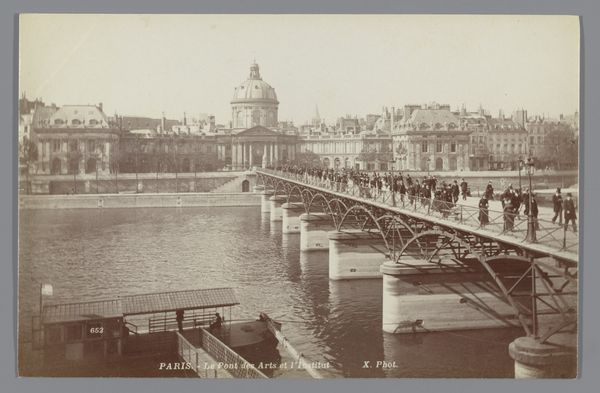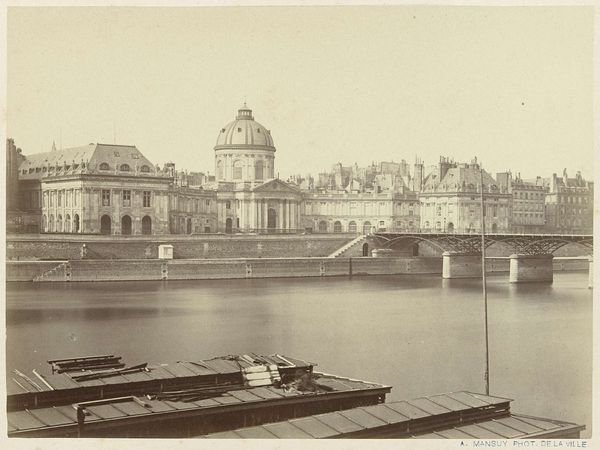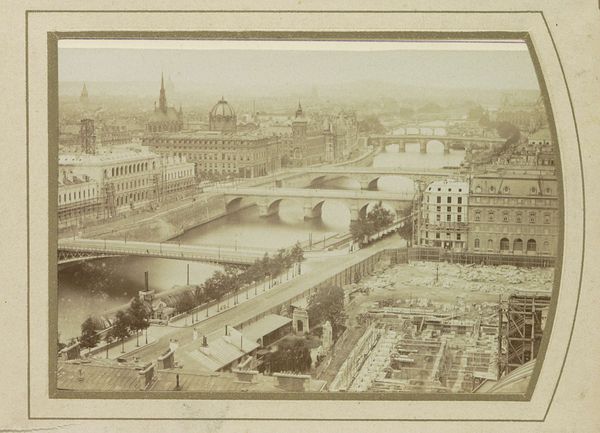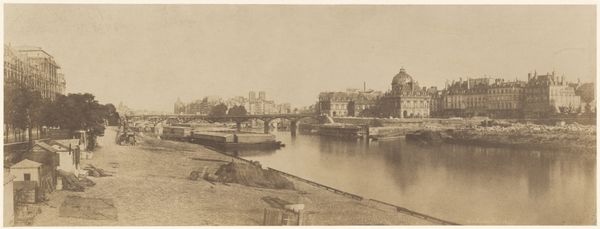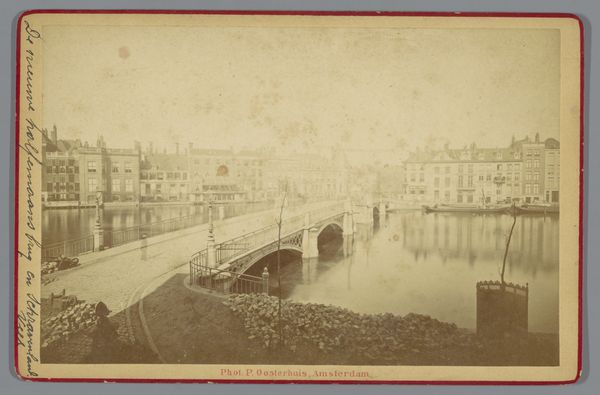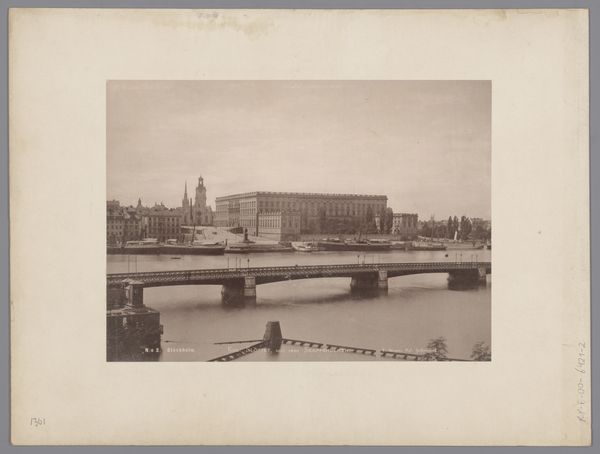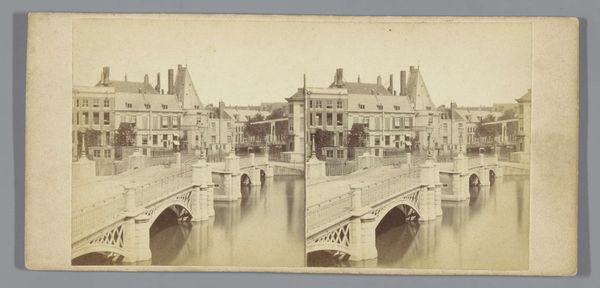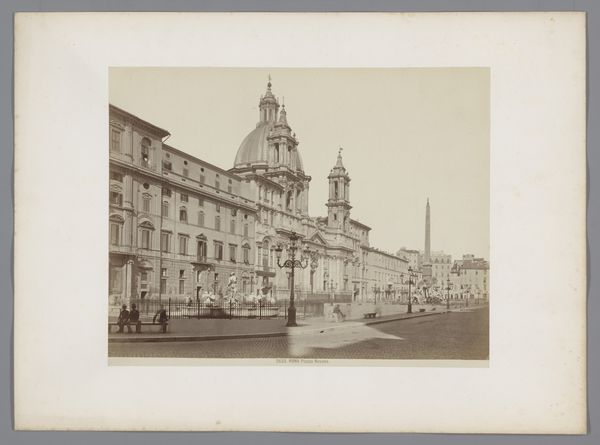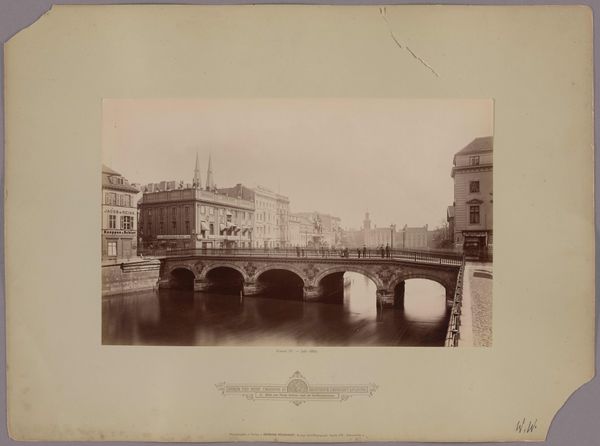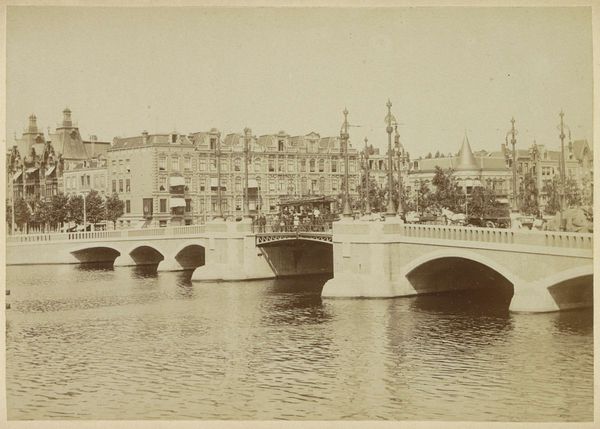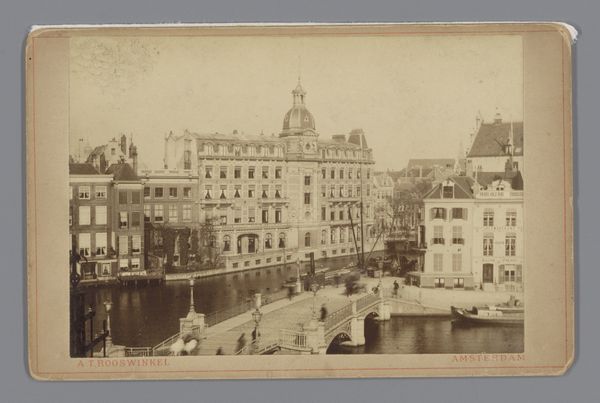
Gezicht op de de Schwarzenbergbrücke en de Karlskirche in Wenen c. 1875 - 1885
0:00
0:00
photography, albumen-print
#
pictorialism
#
photography
#
cityscape
#
albumen-print
#
realism
Dimensions: height 99 mm, width 141 mm
Copyright: Rijks Museum: Open Domain
Editor: This albumen print, dating back to around 1875-1885, captures the Schwarzenberg Bridge and Karlskirche in Vienna. It’s credited to M. Frankenstein & Co. There’s a beautiful stillness to the composition. The detail is incredible considering its age. What strikes you most about this photograph? Curator: The albumen print itself is telling. The materiality – the precise chemistry involved, the labour invested in creating and selling these images as commercial artifacts, contrasts sharply with the grandeur it depicts. Consider the photographer, positioning their camera, manipulating the light...it’s a physical process we often overlook. Editor: So, you're thinking about the making, more than just the image? Curator: Precisely! And its dissemination. Albumen prints were mass-produced, fueling a market hungry for views of Europe. This isn't just a view; it's a product. The "M. Frankenstein & Co." becomes very relevant – a business responding to consumer desire and new forms of visual tourism, a commercial apparatus through which identity itself gets constructed. How does that shift your understanding? Editor: I never thought of it that way. I focused on the composition, the stillness of the image. Seeing it as a product meant for consumption… that adds another layer. What about the choice of subject - is that a material consideration? Curator: Absolutely! The bridge and church aren't just aesthetically pleasing. They represent civic pride, power, and the infrastructure that enabled the flow of people and goods, things intrinsically material. The Church’s imposing architecture speaks volumes. What does it reveal to you? Editor: So, this single image represents both Viennese society’s ambitions, the technology available to render it, and its dissemination as a commodity. It’s much richer than I initially grasped! Thanks for opening my eyes! Curator: Exactly. Looking closely at process reveals the forces behind even the most seemingly straightforward images, allowing us to examine how power, labor, and consumerism shaped our visual history.
Comments
No comments
Be the first to comment and join the conversation on the ultimate creative platform.
